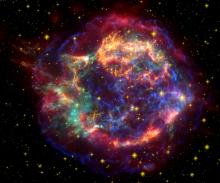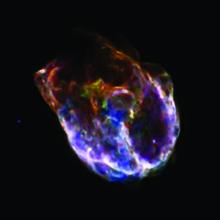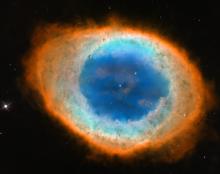Listen to today's episode of StarDate on the web the same day it airs in high-quality streaming audio without any extra ads or announcements. Choose a $8 one-month pass, or listen every day for a year for just $30.
You are here
Final Days
When you turn up the heat in your oven, the pie cooks faster. And if you turn it up too much, the pie can burn up in a hurry.
The same thing happens in the “ovens” at the hearts of massive stars. As such a star ages, the temperature in its core goes up. That causes things to cook faster — and, eventually, to burn up in a titanic explosion: a supernova.
All stars generate energy by “fusing” lighter elements to make heavier ones, releasing energy in the process. They start with hydrogen, the lightest element, which fuses to make helium.
Stars like the Sun end with carbon and oxygen. But stars that are at least eight times the Sun’s mass generate even heavier elements — a process that speeds up over time.
As the core finishes with one element, it gets smaller and hotter, triggering fusion of the next element. It takes millions of years to fuse the hydrogen to make helium. It then takes about one million years to fuse the helium to make carbon; a thousand years to fuse the carbon to make oxygen; and just a few months to fuse the oxygen.
Finally, the process produces silicon, which takes about a day to convert to iron. The iron absorbs energy instead of producing it. So the star’s core collapses to form a neutron star or a black hole. The outer layers plunge inward, then rebound. Those layers blast into space — ripping the star to bits as a supernova.
More about supernovas tomorrow.
Script by Damond Benningfield






